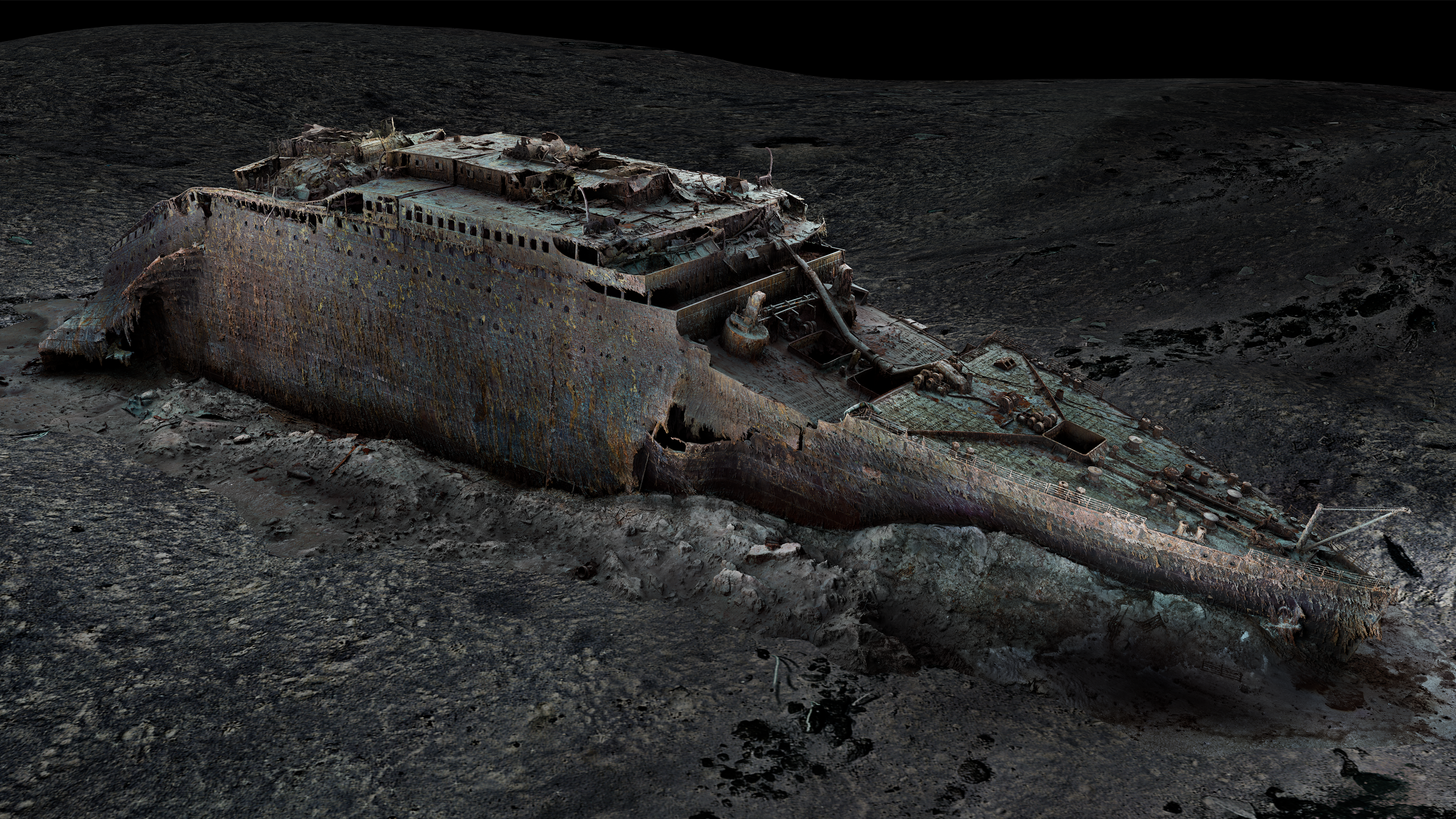
Researchers have reconstructed the Titanic's final hours using the most detailed digital model of the shipwreck to date.
The model, revealed in a new documentary, shows how the 883-foot-long (270 meters) ship, once dubbed "unsinkable," was torn apart after hitting an iceberg 113 years ago. This TV special also offers insights into the actions of some of RMS Titanic's brave crew members.
"Using exclusive access to cutting-edge underwater scanning technology, including 715,000 digitally captured images, the special unveils the most precise model of the Titanic ever created: a full-scale, 1:1 digital twin, accurate down to the rivet," National Geographic wrote in a statement about the documentary, "Titanic: The Digital Resurrection."
Related: New 3D scans reveal stunning details of Shackleton's doomed Endurance expedition to Antarctica
RMS Titanic began its maiden voyage from Southampton in the U.K. on April 10, 1912, carrying 2,240 passengers and crew. The ship was bound for New York City but hit an iceberg four days after setting off. The crew tried to bank left but failed to avoid the iceberg, which scraped along the Titanic's starboard (right side), peppering the ship with holes. More than 1,500 people died in the tragedy.
The Titanic sank to the bottom of the Atlantic Ocean, where its wreck remains some 12,467 feet (3,800 meters) below the surface, according to the National Oceanic and Atmospheric Administration (NOAA). In 2022, deep-sea mapping company Magellan created the 3D digital model featured in the documentary by taking sonar images of the wreck.
Filmmakers at Atlantic Productions followed the Magellan team as they scanned the ship over three weeks in the largest underwater scanning project of its kind, according to the statement. Magellan and Atlantic Productions first unveiled the digital reconstruction in 2023.
In the documentary, researchers use the digital reconstruction to learn more about the Titanic disaster. For example, the team pieced together hull fragments to reveal that the ship violently tore rather than split neatly in two. They also found a steam valve in the open position, which backs up eyewitness accounts that the ship's engineers kept working as the Titanic sank. These engineers sacrificed their own lives to save others, keeping the electricity on so that distress signals could be broadcast.
The team also investigates hundreds of personal artifacts preserved in the wreckage, including pocket watches, purses and a shark’s tooth charm, which they link to the original owners of the objects, according to the statement. James Cameron's "Titanic" (1997) featured a blue diamond necklace called the "Heart of the Ocean," but that was a fictional invention for the film, and thus isn't among the real-life wreckage.
Thursday (April 10) is the 113th anniversary of the Titanic beginning its maiden voyage across the Atlantic, while Monday and Tuesday (April 14 and 15) mark the anniversary of its demise.
"Titanic: The Digital Resurrection" will premiere Friday (April 11) on National Geographic.







